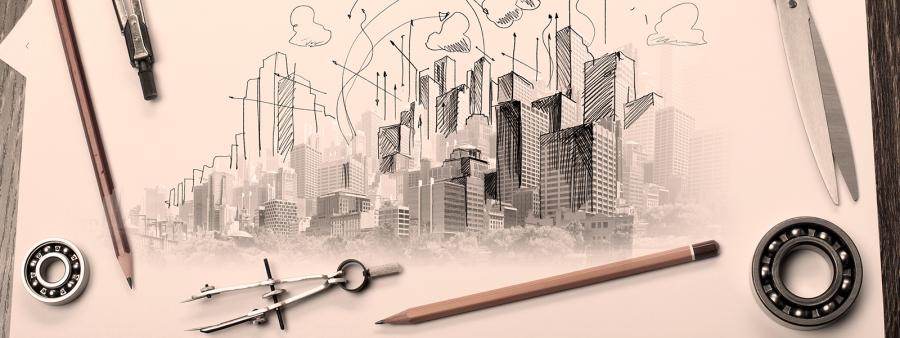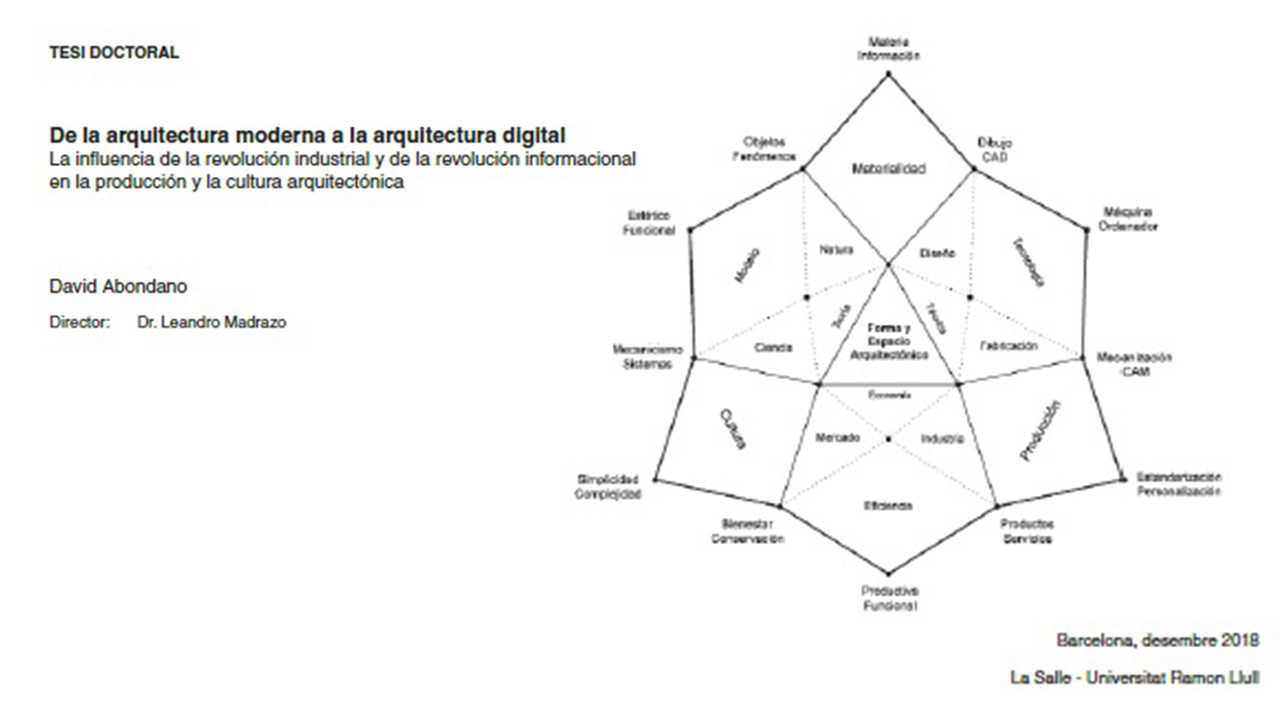Mr. David Humberto Abondano Franco's Thesis Lecture

Abstract
Contemporary architecture is in a process of transformation due to the development and integration of digital technologies in the design and construction processes; a process that evokes the one that took place during the industrial revolution, which crystallized in modern architecture. Today we are immersed in a historical period in which an unprecedented architecture is emerging, as a consequence of the progressive assimilation of the new materials and techniques of digital production, likewise the beginning of the 20th century, when mechanization, standardization, and the mass production of new materials and construction components laid the foundations of modern architecture.
With the advent of digital technologies architecture has entered a transitional period, which includes the time needed to translate the changes driven by the new technological revolution into architectural facts. Along with material production processes, technological development has an impact on the processes and concepts that determine the design and the aesthetic value of architectural works. This thesis explores the influence of the new processes of computer-aided design and manufacturing (CAD/CAM) in current architecture: in the conception, construction and interpretation of architectural productions.
This research starts from the premise that architecture is in a transitional period in full development, a period that can be understood as a flux, a becoming. In this context of change, an analysis focused on the current state of architecture could rapidly fall into obsolescence, since any technique, tool or theory related to digital design and manufacturing processes can be overcome by the speed of technological development.
In order to understand the changes that are taking place, we propose a simultaneous analysis of the technological revolutions that have transformed the conception and construction of architecture in the last two centuries: the industrial revolution and its impact on modern architecture, and the influence of the current digital revolution on the rise of a new architecture. This simultaneous analysis considers the materials, tools, and production processes, as well as the concepts, principles and ideals that in both periods — the industrial revolution and the digital revolution — have foster an architectural culture specific to each time.
The comparison between modern architecture and digital architecture is established through a historical analysis of the production processes fostered by the technological revolutions that lie behind each one — industrial and informational. Thus, contrary to the historiography that proposes a causal relationship between ideas and architectural forms, one of the premises of this thesis is that both, the ideas and the forms that characterize the architecture of a given historical period, respond to a large extent to the means and the modes of production of their time.
By contrasting modern architecture and digital architecture a relationship of continuity between both is proposed. In this sense, modern architecture would be the precedent of digital architecture, as it was the first that results from the integration of technology into architectural creative processes. Therefore, this study of digital architecture starts from the beginnings of the modern era, or Modernity, as it is the era in which architecture begins to adopt production methods based on technical and scientific principles.
